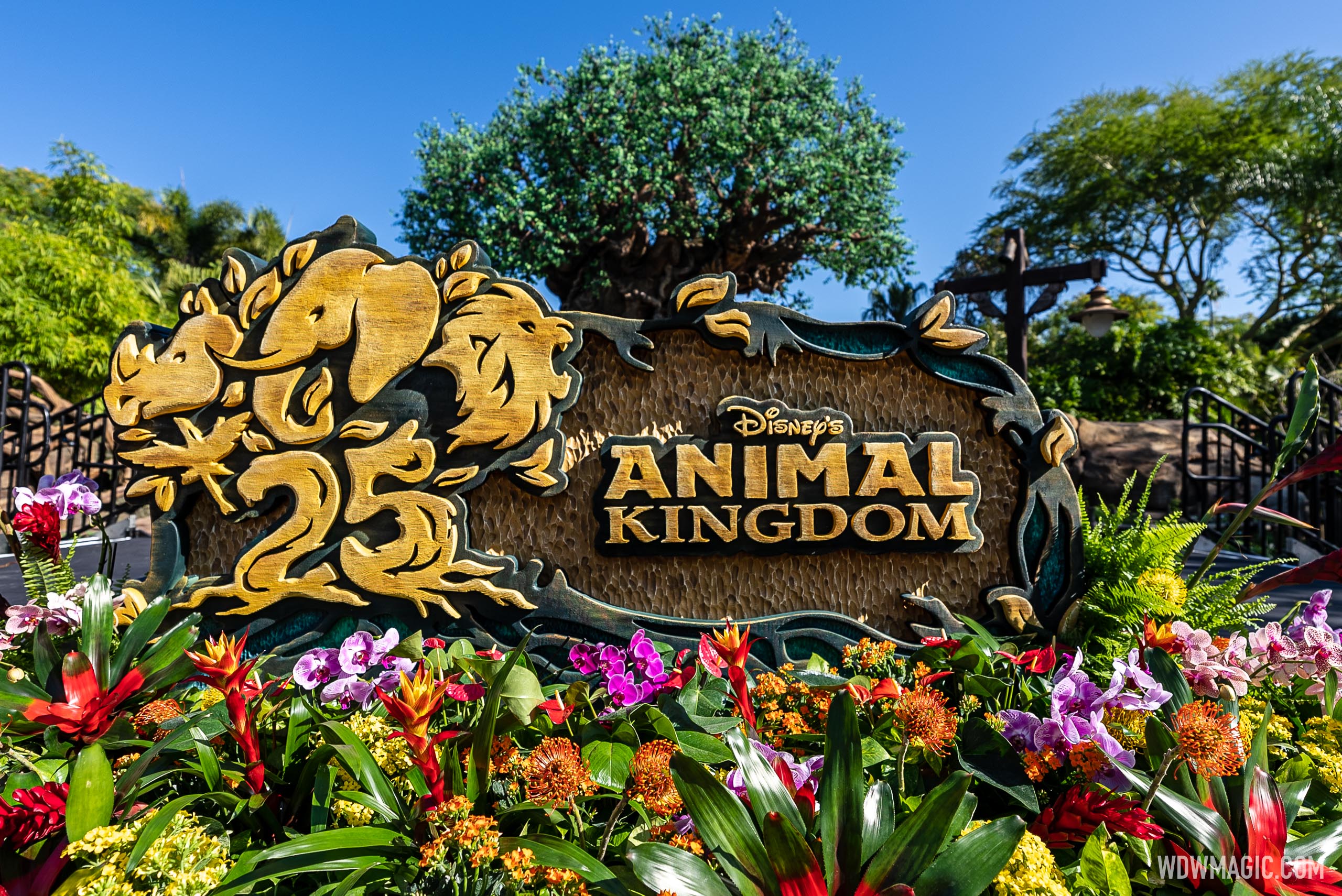The Wonder Of Animals: Exploring The Diverse Animal Kingdom

Table of Contents
Mammalian Marvels: Exploring the Class Mammalia
Mammals, a dominant class within the Animal Kingdom, are characterized by several key features. Understanding these characteristics helps us appreciate the incredible diversity within this group.
Defining Characteristics of Mammals:
- Mammary glands: These specialized glands produce milk, providing essential nourishment for their young. This defining characteristic gives the class its name.
- Hair or fur: This provides insulation, camouflage, and sensory functions, crucial for survival in various environments. The type and density of hair vary widely among different mammal species.
- Three middle ear bones: These tiny bones (malleus, incus, and stapes) efficiently transmit sound vibrations, enhancing hearing capabilities.
- Neocortex region in the brain: This advanced brain region is associated with higher cognitive functions, including complex learning, problem-solving, and social behaviors.
Diversity Within Mammals:
The Animal Kingdom’s Mammalian class showcases remarkable diversity. Consider these examples:
- Primates: This order includes monkeys, apes, and humans, characterized by their grasping hands and feet, relatively large brains, and complex social structures. The great apes, such as gorillas and orangutans, are facing significant threats within the animal kingdom due to habitat loss.
- Carnivora: This order comprises meat-eating mammals like cats, dogs, bears, and weasels, with adaptations like sharp teeth and claws for hunting. The conservation status of many carnivores is a concern due to human activity and habitat encroachment.
- Artiodactyla: Even-toed ungulates, such as cows, deer, and pigs, are herbivores with specialized digestive systems to process plant matter. Their role in various ecosystems is critical.
- Perissodactyla: Odd-toed ungulates, including horses, zebras, and rhinoceroses, are known for their running ability and specialized hoof structures. Many perissodactyls are endangered species.
- Cetacea: This aquatic order includes whales and dolphins, exhibiting incredible adaptations for life in the ocean, such as streamlined bodies and echolocation. Whale conservation is a major focus in marine animal kingdom protection.
Mammals have successfully colonized diverse habitats—from the arctic tundra to tropical rainforests and the vast oceans. Their adaptations reflect this remarkable versatility within the Animal Kingdom. Conservation efforts, such as habitat protection and anti-poaching initiatives, are crucial to safeguarding endangered mammal species.
Avian Adventures: A Look at the Bird World
Birds, or Aves, are another fascinating class within the Animal Kingdom, known for their ability to fly and their vibrant diversity.
Unique Features of Aves:
- Feathers: These lightweight yet strong structures provide insulation, waterproofing, and, most importantly, enable flight. Feather colors and patterns play roles in camouflage, courtship displays, and species recognition.
- Beaks: These diverse structures are adapted to a wide variety of diets. From the sharp beaks of birds of prey to the long, slender beaks of hummingbirds, the beak is a key characteristic.
- Hollow bones: This adaptation reduces weight, making flight more efficient. The internal structure of avian bones is remarkably lightweight yet strong.
- High metabolic rate: This supports their active lifestyles and high energy demands associated with flight.
Exploring Avian Diversity:
The avian world within the Animal Kingdom is strikingly diverse:
- Passeriformes (songbirds): Known for their melodious songs and diverse habitats, songbirds are a large and globally distributed order.
- Accipitriformes (eagles, hawks): These birds of prey possess sharp talons and keen eyesight for hunting.
- Anseriformes (ducks, geese): These aquatic birds exhibit adaptations for swimming and foraging in water.
- Galliformes (chickens, turkeys): These ground-dwelling birds are often characterized by their robust bodies and scratching behavior.
Avian migratory patterns and breeding behaviors are complex and fascinating aspects of their lives, showcasing incredible adaptations within the Animal Kingdom. Birds play vital roles in various ecosystems as pollinators, seed dispersers, and components of food chains.
Reptilian Realms: Unveiling the Secrets of Reptiles
Reptiles, a diverse class within the Animal Kingdom, have captivated humans for centuries.
Characteristics of Reptiles:
- Scaly skin: This tough, waterproof covering protects against desiccation and abrasion. The scales' patterns and colors are species-specific.
- Ectothermic (cold-blooded) metabolism: Reptiles regulate their body temperature behaviorally, often basking in the sun to warm up or seeking shade to cool down.
- Shelled eggs (mostly): Most reptiles lay eggs protected by a hard shell, providing a safe environment for embryonic development. Some reptiles, however, give birth to live young.
- Three- or four-chambered heart: The heart structure varies among different reptile groups, reflecting their evolutionary history.
Exploring Reptilian Diversity:
The Animal Kingdom’s reptilian diversity is significant:
- Squamata (lizards, snakes): This order is characterized by their elongated bodies and forked tongues used for chemoreception.
- Testudines (turtles, tortoises): These reptiles possess a bony shell that provides protection.
- Crocodilia (crocodiles, alligators): These large, aquatic reptiles are apex predators in their respective ecosystems.
Reptiles have successfully adapted to a wide range of habitats, from deserts and rainforests to oceans. Many reptile species face conservation challenges due to habitat loss, pollution, and climate change.
Amphibian Adaptations: Life Between Two Worlds
Amphibians, bridging the gap between aquatic and terrestrial environments, present unique adaptations within the Animal Kingdom.
Defining Characteristics of Amphibians:
- Smooth, moist skin: This permeable skin facilitates gas exchange, allowing them to breathe through their skin. It also makes them susceptible to dehydration.
- Undergo metamorphosis (in most species): Many amphibians have a larval stage (e.g., tadpole) that is aquatic and undergoes a transformation into a terrestrial adult form.
- Spend part of their life cycle in water and part on land: This dual lifestyle reflects their evolutionary history and ecological roles.
- Use lungs and/or skin for respiration: This dual respiratory system allows them to breathe both in water and on land.
Diversity in Amphibians:
The Animal Kingdom’s amphibian diversity includes:
- Anura (frogs, toads): These amphibians are characterized by their powerful hind legs for jumping.
- Caudata (salamanders, newts): These amphibians typically have elongated bodies and tails.
- Apoda (caecilians): These legless amphibians are often found in tropical soils.
Amphibians play crucial roles in ecosystems, serving as both predators and prey. They are highly vulnerable to environmental changes, making their conservation a significant concern.
Invertebrate Inventions: Exploring the World of Invertebrates
Invertebrates, encompassing the vast majority of animal species, display incredible diversity and ecological importance within the Animal Kingdom.
Defining Characteristics of Invertebrates:
- Lack of a backbone: This defining characteristic separates them from vertebrates.
- Vast diversity in body plans and lifestyles: Invertebrates exhibit an incredible range of body forms and ecological roles.
- Important ecological roles as pollinators, decomposers, and food sources: Invertebrates are essential components of most ecosystems.
Exploring Invertebrate Diversity:
The Animal Kingdom’s invertebrate phyla include:
- Arthropoda (insects, crustaceans, arachnids): This is the largest animal phylum, with diverse species adapted to virtually every habitat.
- Mollusca (snails, clams, octopuses): This phylum includes soft-bodied animals with shells (in some species) and diverse lifestyles.
- Annelida (earthworms, leeches): Segmented worms play critical roles in soil health and nutrient cycling.
- Porifera (sponges): These simple, filter-feeding animals are among the most primitive multicellular animals.
- Cnidaria (jellyfish, corals): These radially symmetrical animals are often found in aquatic environments.
Invertebrates are vital for maintaining healthy ecosystems. Their roles in pollination, decomposition, and nutrient cycling are essential for the functioning of the entire Animal Kingdom.
Conclusion
This exploration of the Animal Kingdom has only scratched the surface of the incredible biodiversity our planet supports. From the majestic mammals to the intricate invertebrates, each creature plays a vital role in the complex web of life. Understanding and appreciating the diversity within the animal kingdom is crucial for effective conservation efforts and ensuring the survival of these remarkable species for generations to come. Continue your journey of discovery – learn more about the amazing animal kingdom and get involved in conservation efforts today!

Featured Posts
-
 Sabalenka Triumphs Miami Open Final Against Pegula
May 13, 2025
Sabalenka Triumphs Miami Open Final Against Pegula
May 13, 2025 -
 Aryna Sabalenka And Coco Gauff Secure Rome Open Wins
May 13, 2025
Aryna Sabalenka And Coco Gauff Secure Rome Open Wins
May 13, 2025 -
 The Implications Of Trumps Executive Order On Drug Prices
May 13, 2025
The Implications Of Trumps Executive Order On Drug Prices
May 13, 2025 -
 Kalyteres Epiloges Gia Metadoseis Serie A Online
May 13, 2025
Kalyteres Epiloges Gia Metadoseis Serie A Online
May 13, 2025 -
 A Deep Dive Into Doom The Dark Ages
May 13, 2025
A Deep Dive Into Doom The Dark Ages
May 13, 2025
